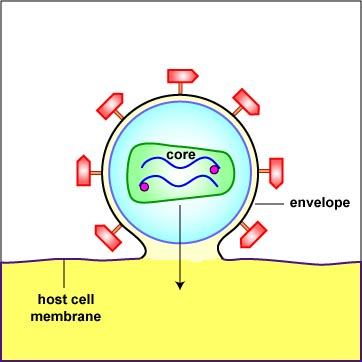Fig. 5: Penetration of HIV into
Host Cell,Step-1

The
binding of a portion or domain of the HIV surface glycoprotein gp120 to a CD4
molecule on the host cell induces a change in shape that brings the chemokine
receptor binding domains of the gp120 into proximity with the host cell chemokine
receptor. This, in turn, brings about a conformational change that exposes a previously
buried portion of the transmembrane glycoprotein gp41 enabling the viral envelope
to fuse with the host cell membrane.
Illustration of Penetration of HIV into Host Cell,Step-1. .jpg by Gary E. Kaiser, Ph.D.
Professor of Microbiology,
The Community College of Baltimore County, Catonsville Campus
This work is licensed under a Creative Commons Attribution 4.0 International License.
Based on a work at https://cwoer.ccbcmd.edu/science/microbiology/index_gos.html.

Last updated: August, 2019
Please send comments and inquiries to Dr.
Gary Kaiser
